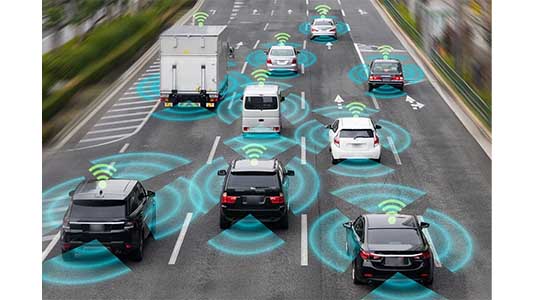The global Vehicle-to-Everything (V2X) Security market is experiencing unprecedented growth as the automotive industry undergoes a digital transformation that fundamentally redefines transportation safety and connectivity. According to a comprehensive new research report from MarketIntelo, the V2X Security market was valued at $1.1 billion in 2024 and is projected to surge to $6.3 billion by 2033, representing a robust compound annual growth rate (CAGR) of 21.7% throughout the forecast period.

V2X Security Market Growth Forecast and Regional Distribution Analysis
This explosive growth trajectory reflects the critical importance of cybersecurity infrastructure as vehicles evolve from isolated mechanical systems into sophisticated “computers on wheels” that communicate seamlessly with infrastructure, other vehicles, pedestrians, and cloud-based networks. The convergence of autonomous driving technologies, 5G connectivity, and smart city initiatives is creating an ecosystem where security becomes paramount to public safety and consumer trust.
North America Leads Market with 38% Share, Asia Pacific Poised for Fastest Growth
The current market landscape reveals significant regional variations in V2X security adoption and investment patterns. North America commands the largest market share at 38%, driven by robust automotive manufacturing capabilities, early adoption of connected vehicle technologies, and proactive regulatory frameworks mandating cybersecurity compliance for V2X deployments. The United States specifically leads in pilot projects and commercial rollouts, with strong collaboration between federal agencies, automotive OEMs like General Motors and Ford, and specialized cybersecurity vendors.
However, the Asia Pacific region is projected to register the highest CAGR of 24.1% during the forecast period, fueled by aggressive government investments in smart transportation and urban mobility infrastructure. Countries including China, Japan, and South Korea are spearheading large-scale V2X deployments as integral components of their smart city initiatives, with substantial government-backed programs and public-private partnerships accelerating market penetration.
The rapid expansion of 5G networks across Asia Pacific, combined with high vehicle production volumes and increasing consumer awareness of connected vehicle benefits, is creating optimal conditions for V2X security innovation. Regional automotive manufacturers and telecommunications companies are actively collaborating on localized security standards and interoperability frameworks, positioning the region as a global hub for next-generation V2X security solutions.
Request a complimentary sample of this comprehensive report to explore detailed market forecasts, competitive analysis, and strategic recommendations at: https://marketintelo.com/request-sample/33203
Software Solutions Dominate Market with 45% Revenue Share
The V2X Security market’s offering segment reveals the critical role of software-based solutions in securing modern vehicular communications. Software solutions constitute the largest revenue share at 45%, attributed to their essential function in managing encryption, authentication, intrusion detection, and threat intelligence across complex V2X communication layers. The rapid evolution of cyber threats is driving continuous innovation in software-based security platforms, with vendors prioritizing modular, scalable, and interoperable architectures.
Hardware offerings, including secure elements, trusted platform modules (TPMs), and hardware security modules (HSMs), are gaining significant traction as automotive OEMs increasingly seek to embed security capabilities at the chip level. This hardware-centric approach enables secure boot processes, cryptographic key protection, and tamper resistance essential for maintaining V2X device integrity.
The services segment, encompassing consulting, integration, and managed security services, is experiencing double-digit growth as organizations require expert guidance on risk assessment, regulatory compliance, and incident response capabilities. This comprehensive service ecosystem reflects the complexity of implementing robust V2X security across diverse automotive and infrastructure environments.
Vehicle-to-Vehicle Communication Commands 32% Market Share
Within the communication type segment, Vehicle-to-Vehicle (V2V) communication leads with over 32% market share, enabling real-time information exchange regarding speed, location, and directional data critical for collision avoidance and traffic management systems. Security solutions in this domain focus on message authentication, encryption protocols, and intrusion detection capabilities designed to prevent spoofing attacks, data tampering, and denial-of-service incidents.
Vehicle-to-Infrastructure (V2I) and Vehicle-to-Network (V2N) represent rapidly growing sub-segments driven by intelligent transportation system deployments and connected road infrastructure development. V2I security emphasizes secure communication channels between vehicles and roadside units, traffic signals, and toll collection systems to ensure data integrity and operational safety. V2N solutions focus on secure connectivity between vehicles and cloud-based platforms supporting navigation, infotainment, and remote diagnostic capabilities.

The proliferation of edge computing technologies and 5G-enabled V2N solutions is driving demand for robust security frameworks capable of adapting to distributed network architectures and evolving threat landscapes. Industry analysts project continued competitive intensity within the communication type segment, with leading cybersecurity vendors, automotive OEMs, and telecommunications operators competing through innovation, strategic partnerships, and compliance with evolving global standards.
Automotive Industry Leads Application Segment with 52% Market Share
The application analysis reveals the automotive industry’s dominance with over 52% of total application revenue, as manufacturers integrate V2X security solutions directly into vehicle platforms to meet regulatory mandates and consumer expectations. The focus centers on securing over-the-air software updates, remote diagnostic capabilities, and autonomous driving features through end-to-end encryption and advanced anomaly detection systems.
Transportation sector applications, including public transit and freight logistics operations, represent significant growth opportunities as organizations invest in V2X security to enhance operational efficiency, passenger safety, and asset tracking capabilities. Smart Cities applications are experiencing rapid expansion, driven by large-scale connected infrastructure deployments, intelligent traffic management systems, and comprehensive urban mobility solutions.
Security considerations within smart city contexts prove critical for protecting citizen data, ensuring service continuity, and preventing cyber-physical attacks on municipal infrastructure. Emerging applications include emergency response systems, pedestrian safety platforms, and connected healthcare vehicles, where robust security measures are integral to mission-critical operations.
Market Opportunities Driven by Digital Transformation and Regulatory Mandates
The V2X Security market presents numerous opportunities stemming from digital transformation initiatives, unmet demand in emerging markets, and convergence with adjacent technology sectors. The rise of autonomous vehicles, electric mobility platforms, and shared transportation models creates new use cases for V2X security ranging from secure vehicle platooning to encrypted energy transactions at charging stations.
Government initiatives play a pivotal role in market expansion, with post-pandemic stimulus packages, infrastructure modernization programs, and regulatory mandates accelerating secure V2X deployment investments. Notable examples include the European Union’s Cooperative Intelligent Transport Systems (C-ITS) Directive and the US Department of Transportation’s comprehensive V2X communications initiatives.
Strategic opportunities exist in quantum-safe cryptography, blockchain-based identity management, and privacy-preserving analytics, where early movers can establish competitive advantages. The standardization and interoperability of V2X security solutions represent major opportunities as global automotive and telecommunications standards bodies converge on common frameworks.
Key Market Players Drive Innovation Through Strategic Partnerships
The competitive landscape features a moderate concentration of global cybersecurity companies, automotive OEMs, and specialized V2X security vendors competing through both price-based and innovation-driven differentiation strategies. Leading companies including Continental AG, Harman International, Infineon Technologies, and Qualcomm Technologies are investing heavily in research and development to maintain competitive advantages amid evolving cyber threats.
Continental AG distinguishes itself through comprehensive product strategies encompassing secure V2X communication modules, cryptographic key management systems, and secure software update capabilities. The company’s strong revenue foundation and global presence support expansion through strategic partnerships with automotive manufacturers, technology providers, and government agencies.
Harman International, a Samsung subsidiary, offers end-to-end V2X security solutions integrating hardware, software, and cloud-based services. The company’s revenue strength derives from established relationships with global automotive OEMs and proven capabilities in delivering scalable, interoperable security platforms.
Regional competition dynamics show North American and European vendors focusing on regulatory compliance with stringent frameworks, while Asia Pacific companies emphasize scalability, localization, and cost-effectiveness. The entry of telecommunications operators and cloud service providers into the V2X Security space is reshaping competitive dynamics through integrated security offerings leveraging existing network infrastructure and customer relationships.
Regulatory Evolution Shapes Market Growth and Standards Development
The regulatory landscape for V2X Security continues evolving rapidly, with governments and standards organizations worldwide implementing mandates and guidelines ensuring safety, privacy, and interoperability within connected vehicle ecosystems. In the United States, the National Highway Traffic Safety Administration (NHTSA) and Federal Communications Commission (FCC) actively shape V2X security requirements through pilot programs and spectrum allocation decisions.
The European Union’s C-ITS Directive and UN Economic Commission for Europe (UNECE) WP.29 regulations establish stringent cybersecurity and data protection standards for automotive manufacturers and infrastructure providers. Asian markets including China, Japan, and South Korea are developing localized V2X security frameworks aligned with global best practices while addressing regional market requirements.
Compliance with these evolving regulations becomes a key differentiator for market participants, driving investments in certification processes, risk assessment capabilities, and continuous monitoring systems. The harmonization of security standards and cross-border data sharing agreements will prove critical in enabling seamless, secure, and scalable V2X deployments across global markets.
About the Research
This comprehensive market analysis draws from extensive primary and secondary research methodologies, incorporating insights from industry executives, technology providers, regulatory bodies, and end-user organizations across global markets. The 251-page report provides detailed segmentation analysis across communication types, offering categories, security types, and application sectors, supported by 259 tables and figures delivering actionable market intelligence.
For complete market insights and detailed analysis, access the full Vehicle-to-Everything (V2X) Security Market Research Report 2033 at: https://marketintelo.com/report/vehicle-to-everything-v2x-security-market













